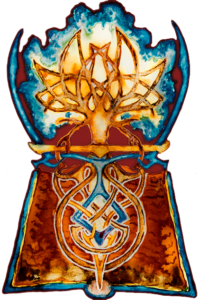
SABRE - RAPIER - FLEURET
Barrandov Fencing School
NEWS
TRAINING
Training sessions take place every Thursday from 7 to 9 pm at
ZŠ Chaplinovo nám. 1, Barrandov
Our trainings are dedicated to the trio of weapons rapier, smallsword/fleuret and sabre in the ratio determined by the preferences of the participants in a given year. The basic techniques common to the weapons are practiced collectively, and then the fencers are divided according to their preferred weapon and their level of proficiency. The smallsword and the sabre are weapons that have historically occurred in the same centuries and make a nice complement to each other - one primarily cutting, the other stabbing, with a common basis in the nomenclature of positions and techniques. The rapier serves as an excursus into an earlier period, and is often practiced with a left-handed dagger or a cloak or rope.
Free sparring is a regular and systematic part of the class, with free sparring at a slow pace and without protective gear in the middle of the class, and free sparring at a faster pace with protective gear at the end of the class. Irregularly, we then add variety to the lessons in the form of acrobatic elements, falls with weapons and various perceptual and preparatory exercises.
Throughout the year, we always develop the material systematically so that before the summer a certain area is comprehensively covered and those interested in the qualification can then pass the exams. Interested students are always welcome across the year and can come to a free demonstration class at any time. But of course it is best to jump into training after the summer holidays or after the New Year, when we usually start new chapters. There is room for both complete beginners and experienced fencers at the training.
WHAT YOU WILL LEARN WITH US
SABRE
Historical sabre fighting techniques are a specialty of our training. We practice both classical European sabre (Alfred Hutton, John Waite) and Eastern European styles of fighting (based on Master Peter Koza), as well as techniques from Indian Sikh sabre fighting (based on training with Master Manjit Singh of Amritsar). For us, the sabre is a versatile weapon that has both a very systematic character in the form of 19th century European sabre techniques, and a multitude of regional techniques corresponding to sabre variants in Eurasia - from the Cossack shashka, to the Turkish kilidj, the Arab saif, the Persian shemshir, and the Indian talwar. The sabre techniques also include drawing techniques and combat work with the scabbard and strap.
RAPIER
As far as the rapier is concerned, the historical reference for us are the manuals by Ridolfo Capo Ferro, Francesco Alfieri and Salvatore Fabris. Their positions and approaches differ in many ways and so most of the time we follow the intersection of these authors, enriching them with techniques specific to one of them. For the sake of variety, we involve the techniques of fighting with a cloak, rope or two weapons according to Achille Marozzo. Unlike fleuret and sabre, rapier combat is primarily based on striking into the opponent's tempo, so we train them with protective gear when practicing at higher speeds.
FLEURET
The fleret is a training variant of the smallsword, so the two weapons can be referred to interchangeably in training. For the fleuret, we mainly rely on Domenico Angelo's clear and systematic textbook. The advantage of the fleuret is its minimalism, so one can practice a relatively narrow group of techniques and concentrate on the quality of performance, correct tempo and distance. The fleret is also a very light weapon, so it is suitable for people with a more fragile constitution and allows one to fully enjoy the "geometry" of fencing.
Mgr. Jan A. Kozák, PhD.
FOUNDER AND SENIOR LECTURER
Jan A. Kozák has been trained in longsword, Spanish and Italian rapier, smallsword and sabre. He started systematic training in 2001 with longsword, first with Mirek Khun and then with Borek Belfín, for a total of 5 years, during which he also attended four weekly longsword schools under the guidance of Master Peter Koza and weekend schools with Peter Vytopil, Peter Žakovský and others.
His interest subsequently turned to later weapons and especially the Spanish rapier, which he took in the form of three weekly schools under Peter Koza and independent study, at the end of which he wrote the scripts of the Spanish school. This was followed by weekly schools devoted to the Italian and French schools of fencing (elementary, advanced and very advanced) and the sabre school. He subsequently developed the sabre and fleuret at Peter Nusek's trainings, first as a student, then as an assistant and finally as a teacher, for a total of about 8 years.
In 2009 he went to India, where he learned sabre fighting from the Sikhs in the tradition of their martial art gatka. At A.R.G.O. Agency he gained experience in stage fencing, both in film, TV series, documentary, commercials and on the live stage. He has represented historical fencing several times at BudoShow in Prague and other cities. He has participated in a number of international fencing symposiums, either as an assistant or as a lecturer (Verbania in Italy, Leeds in England, Bremen in Germany and others).
In 2014 he founded the Barrandov Fencing School under the auspices and fraternal support of the St. Michael Guild. For more information about Jan A. Kozák, see his personal website.
Mgr. Jan A. Kozák, PhD.
FOUNDER AND SENIOR LECTURER
Jan A. Kozák has been trained in longsword, Spanish and Italian rapier, smallsword and sabre. He started systematic training in 2001 with longsword, first with Mirek Khun and then with Borek Belfín, for a total of 5 years, during which he also attended four weekly longsword schools under the guidance of Master Peter Koza and weekend schools with Peter Vytopil, Peter Žakovský and others.
His interest subsequently turned to later weapons and especially the Spanish rapier, which he took in the form of three weekly schools under Peter Koza and independent study, at the end of which he wrote the scripts of the Spanish school. This was followed by weekly schools devoted to the Italian and French schools of fencing (elementary, advanced and very advanced) and the sabre school. He subsequently developed the sabre and fleuret at Peter Nusek's trainings, first as a student, then as an assistant and finally as a teacher, for a total of about 8 years.
In 2009 he went to India, where he learned sabre fighting from the Sikhs in the tradition of their martial art gatka. At A.R.G.O. Agency he gained experience in stage fencing, both in film, TV series, documentary, commercials and on the live stage. He has represented historical fencing several times at BudoShow in Prague and other cities. He has participated in a number of international fencing symposiums, either as an assistant or as a lecturer (Verbania in Italy, Leeds in England, Bremen in Germany and others).
In 2014 he founded the Barrandov Fencing School under the auspices and fraternal support of the St. Michael Guild. For more information about Jan A. Kozák, see his personal website.
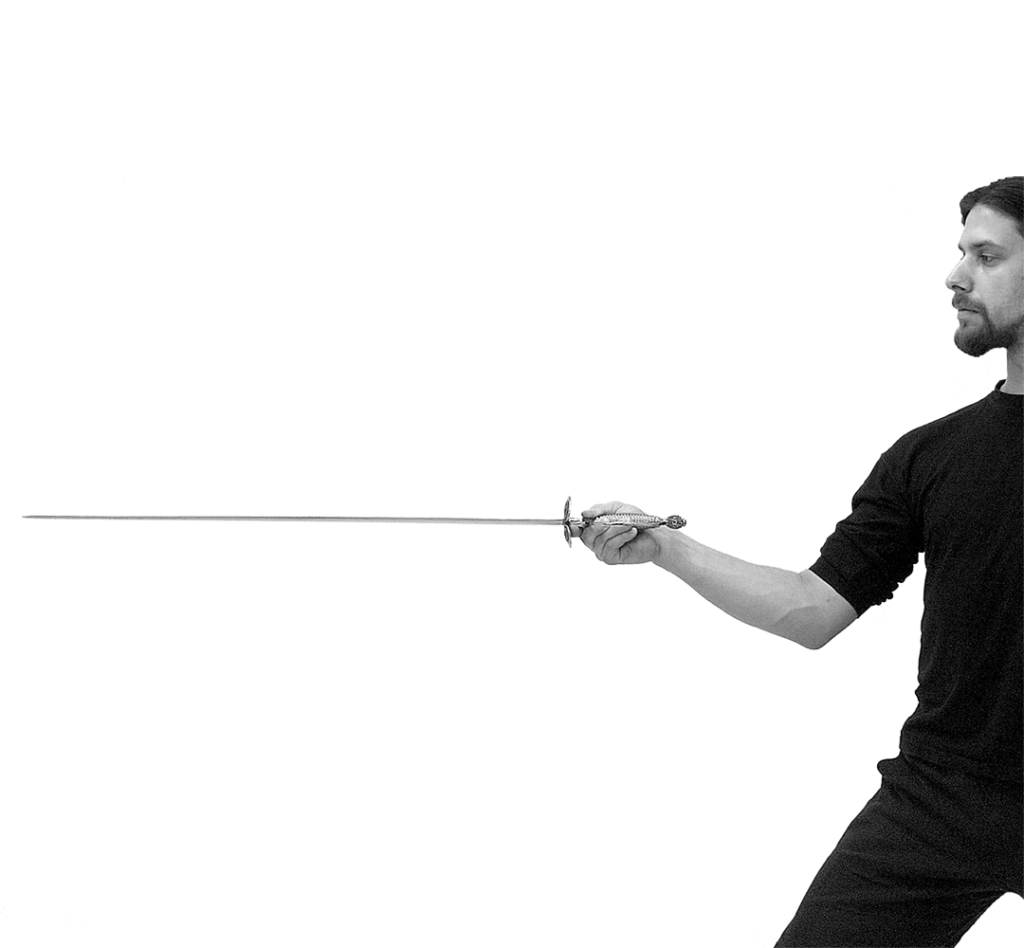
Pavel Lstiburek
LECTURER
Pavel Lstiburek started fencing in 2003 with one-handed and one-and-a-half-handed sword. Since 2005 he has participated in many LARPs and stage fencing performances with the weapons one-handed sword, two-handed sword, two swords and sword with shield. Since 2015, he has been studying historical sabre, rapier and fleuret fencing at the Barrandov School of Fencing under the guidance of Jan A. Kozák. Since 2018, he has extended his studies to the teachings of Luigi Barbasetti in sabre, fleuret and sword fencing at the Ars Dimicatoria Fencing School under the guidance of Leonid Křížek, Michael Kňažko and Michal Šolc.
Pavel Lstiburek
LECTURER
Pavel Lstiburek started fencing in 2003 with one-handed and one-and-a-half-handed sword. Since 2005 he has participated in many LARPs and stage fencing performances with the weapons one-handed sword, two-handed sword, two swords and sword with shield. Since 2015, he has been studying historical sabre, rapier and fleuret fencing at the Barrandov School of Fencing under the guidance of Jan A. Kozák. Since 2018, he has extended his studies to the teachings of Luigi Barbasetti in sabre, fleuret and sword fencing at the Ars Dimicatoria Fencing School under the guidance of Leonid Křížek, Michael Kňažko and Michal Šolc.
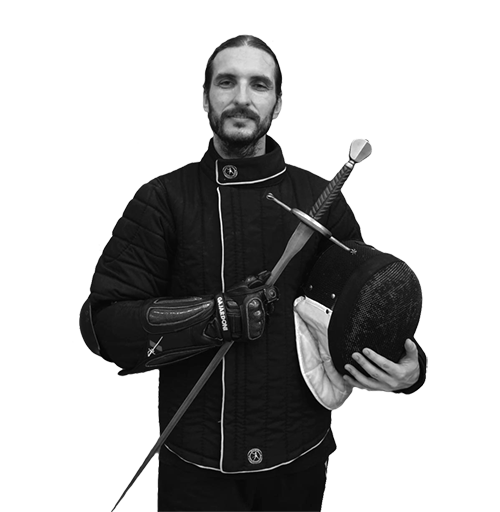
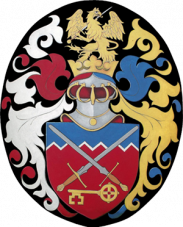
St. Michael's Guild
The Guild is a rare team of fencers and wrestlers led by Petr Matoušek, who, in the humble opinion of the Barrandov School senior lecturer, represents the best of longsword, fencing and period wrestling that exists in Europe today, especially in terms of method and historical fidelity. The roots of the Guild lie in a minor revolution that occurred sometime around the end of the first decade of the 21st century, when our older knowledge of the so-called "Lichtenauer School" was corrected by a careful reading of primary sources, mainly through the work of Petr Matoušek in Bohemia and Martin Fabian in Slovakia. The Guild was founded a few years after this revolution and brings together teachers and students who follow the teachings and methods developed by Petr Matoušek. The Barrandov School is a bit unique in this respect, as its focus on younger schools and other weapons means that it does not follow the same methodology, although it has been gradually inspired by it in many ways. For us, being a member of the Guild means that we are in close contact with well conducted research, that we visit each other at training sessions and attend joint events with other teachers, and that any interested members of our ranks who are eager to wrestle and fight with the longsword are sent to fellow Guild members in the first instance.
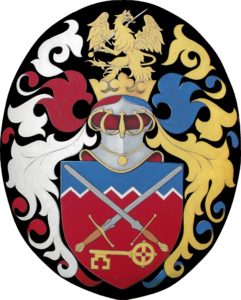
Barrandov Fencing School
ZŠ Chaplinovo nám. 1
Praha 5 – Hlubočepy
152 00